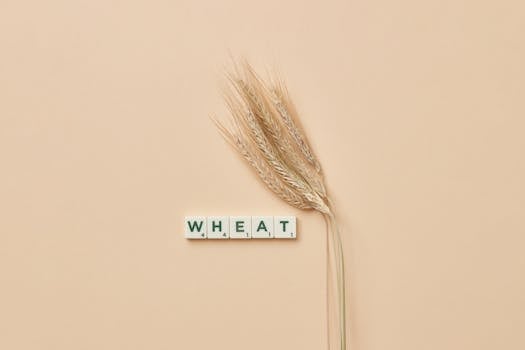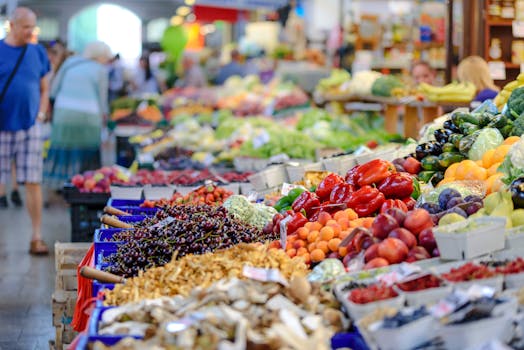The agriculture sector is experiencing a remarkable transformation, driven by the adoption of digital tools. These innovations are fundamentally changing how farmers approach their work, increasing efficiency and productivity. As farmers embrace technology, it’s essential to analyze the impact of these digital tools on farming across the United States.
From precision farming to digital marketplaces, technology provides new avenues for farmers to streamline operations and enhance decision-making. This article will explore the various aspects of digital tools in agriculture, illustrating their influence on the industry. Understanding these impacts is crucial for fostering a future of sustainable and efficient farming practices.
The integration of digital tools in agriculture paves the way for a more innovative and resilient farming landscape. As we delve into this topic, we will examine different aspects of how these tools are reshaping agriculture in the U.S. and what that means for farmers today.
Precision Farming: Enhancing Crop Yields
Precision farming relies on technology to monitor, manage, and optimize field variability. This data-driven approach helps in applying the right amount of inputs, such as water and fertilizers. Accordingly, farmers can significantly enhance their crop yields.
GPS technology and soil sensors are examples of tools used in precision agriculture. These systems gather data that inform farmers about the specific needs of their fields, enabling more efficient resource usage. Consequently, this leads to cost savings and better environmental stewardship.
Through remote sensing, farmers can assess crop health and anticipate issues like pests or diseases before they become critical. Many tools provide real-time insights that allow for prompt interventions. Thus, timely data can transform farming practices into both reactive and proactive measures.
Moreover, precision farming contributes to sustainable practices by minimizing over-application of inputs. This reduction not only benefits the environment but also boosts the economic viability of farming enterprises. As a result, many farmers are achieving greater profitability and sustainability simultaneously.
Finally, precision farming is becoming more accessible as technology systems evolve and prices become more affordable. This democratization of technology empowers more farmers to adopt precision practices for improved performance and resilience.
Data Analytics: Driving Informed Decision-Making
Data analytics plays a crucial role in modern agriculture. By analyzing vast amounts of data, farmers can make more informed decisions that directly impact their operations. Understanding market trends and climatic conditions can dramatically enhance planning and productivity.
Furthermore, predictive analytics allows farmers to forecast yields and optimize their planting schedules. When farmers can anticipate the best times for planting and harvesting, they can maximize their outputs. This critical insight helps in aligning supply with market demand.
Integrating data analytics tools into farming operations can also enhance risk management. By utilizing historical data and modeling potential scenarios, farmers can prepare for unpredictable events and mitigate financial losses. As a result, there’s a stronger safety net for the agricultural enterprise.
Moreover, machine learning algorithms can identify patterns in farming data. These patterns assist farmers in refining their practices and anticipating future challenges. The value of such insights cannot be overstated, as they open new avenues for efficiency.
Ultimately, the accessibility of data analytics tools ensures that even small-scale farmers can benefit from advanced insights. This progressive trend contributes to a more competitive and resilient agricultural landscape across the United States.
Digital Marketplaces: Expanding Access to Consumers
Digital marketplaces have transformed the way farmers connect with consumers. These platforms facilitate direct-to-consumer sales, providing farmers with expanded markets for their products. By bypassing traditional distribution channels, farmers can increase their profit margins.
Additionally, consumers benefit from increased access to fresh produce and local goods. The online platforms enable them to discover unique products that may not be widely available in grocery stores. This accessibility builds a closer relationship between farmers and consumers.
Social media also plays a significant role in promoting these digital marketplaces. Through strategic marketing, farmers can effectively reach target audiences, share their stories, and increase brand visibility. Consequently, a digital presence can drive sales and consumer loyalty.
New technologies allow for a variety of payment options, making transactions seamless and efficient. Consumers appreciate the convenience, encouraging more individuals to shop directly from farmers. Enhanced customer experiences ultimately translate into higher sales for farmers.
As digital marketplaces continue to grow, they hold the potential to redefine local economies. Farmers can establish direct relationships with their customer base, enhancing their community engagement while boosting overall sales through increased visibility.
Smart Irrigation Systems: Optimizing Water Usage
Smart irrigation systems have emerged as critical tools for conserving water in agriculture. These systems use sensors and weather data to determine the optimal amount of water needed for crops. Thus, farmers can conserve resources while ensuring their plants receive adequate hydration.
With drought conditions impacting many regions in the U.S., efficient water management is more urgent than ever. Smart irrigation not only helps to address this issue but also reduces costs associated with water use. Ultimately, water-efficient practices safeguard both crops and the environment.
These irrigation systems can be operated remotely, providing farmers with flexibility in managing their resources. By integrating mobile technology, farmers can monitor and control their systems from anywhere. This accessibility increases productivity and ensures timely interventions.
Moreover, data collected from smart irrigation can inform farmers about long-term trends and best practices. With this information, they can continuously improve their water management strategies. The result is healthier crops that thrive with the right water balance.
As adoption rates for smart irrigation systems rise, they will contribute to more sustainable agricultural practices nationwide. This trend not only supports agricultural viability but also promotes environmental stewardship and conservation of natural resources.
Automation and Robotics: Streamlining Labor Efficiency
Automation and robotics are revolutionizing labor practices within agriculture. These technologies enhance productivity by performing repetitive tasks more efficiently than human laborers. From planting to harvesting, automation can significantly reduce the time and labor required.
Additionally, robotics in agriculture can mitigate labor shortages, which have become a pressing issue in many areas. By implementing autonomous equipment, farmers can maintain productivity levels without relying solely on seasonal labor. This shift allows for consistent management of farming operations.
Robots are particularly adept at handling delicate tasks, such as crop monitoring and pest control. Utilizing advanced sensors and vision systems, they can identify problems and address them swiftly. This capability minimises losses and ensures quality in harvested produce.
Moreover, automated systems gather data that can further inform farming practices. As these machines operate, they provide valuable insights that can lead to improved yield potential. Combining this data with existing knowledge establishes a feedback loop of continuous improvement.
The integration of automation and robotics into agriculture supports the sector’s growth and sustainability. As technology advances, the opportunities for greater efficiency and productivity will only continue to expand.
Challenges and Considerations: Navigating the Digital Landscape
Despite the numerous benefits of digital tools in agriculture, challenges must be acknowledged. The initial cost of adopting advanced technologies can deter many farmers, particularly small-scale operators. This financial barrier can limit access to innovations that boost productivity.
Furthermore, not all farmers possess the necessary digital literacy to effectively utilize these technologies. Training and education are crucial to ensure farmers can harness the full potential of digital tools. Inadequate training may lead farmers to underutilize resources.
Data management also poses significant concerns, especially regarding privacy and security. Farmers need to ensure that their data is protected and used ethically, enabling trust in the systems they implement. Understanding regulations surrounding data is vital for compliance and security.
Additionally, as the sector becomes more technology-dependent, concerns about reliance on technology arise. Disruptions in internet connectivity or system failures can disrupt operations and affect productivity levels. Robust contingency plans can help mitigate these risks.
Finally, the need for sustainable practices must remain at the forefront of technology adoption. Striking a balance between efficiency and environmental stewardship is essential as the agricultural sector evolves with digital tools.
Conclusion: A Transformative Future for Agriculture
The impact of digital tools on agriculture is profound and far-reaching. As technology continues to advance, farmers will benefit from improved efficiency, productivity, and sustainability. Embracing innovative practices ensures that the agricultural sector remains resilient in the face of challenges.
Ultimately, understanding and addressing the challenges of adopting these technologies will be vital for farmers across the United States. By fostering a culture of innovation and collaboration, the future of agriculture looks promising and transformative.
In conclusion, the adoption of digital tools in agriculture enhances not only the efficiency of farming practices but also the connection between farmers and consumers. This transformation represents a crucial step towards a more sustainable agricultural landscape.
| Digital Tool | Impact on Agriculture |
|---|---|
| Precision Farming | Enhances crop yield through data-driven decisions. |
| Data Analytics | Improves decision-making and risk management. |
| Digital Marketplaces | Connects farmers directly to consumers, boosting sales. |
| Smart Irrigation | Conserves water and increases crop health. |
| Automation & Robotics | Streamlines labor efficiency and reduces costs. |
- Increased efficiency in farming operations.
- Better access to market and consumer connections.
- Improved resource management and sustainable practices.
- Enhanced data-driven decision-making capabilities.
- Mitigation of labor shortages through automation.


